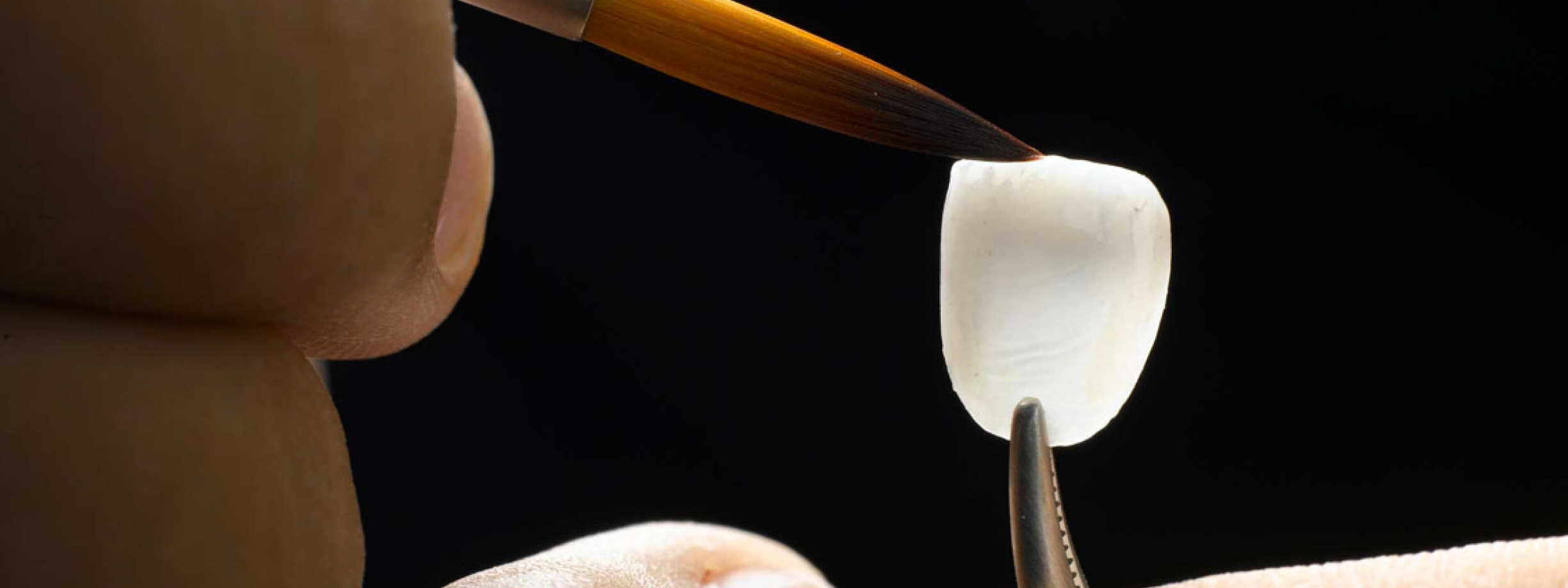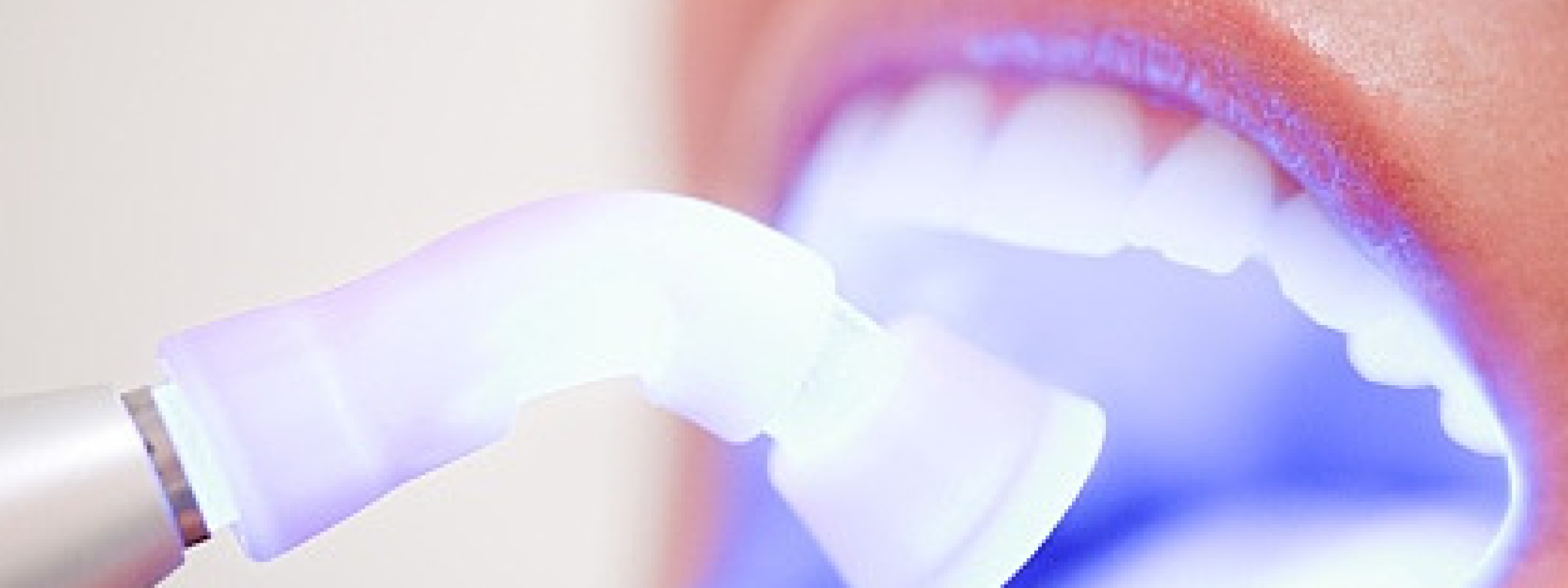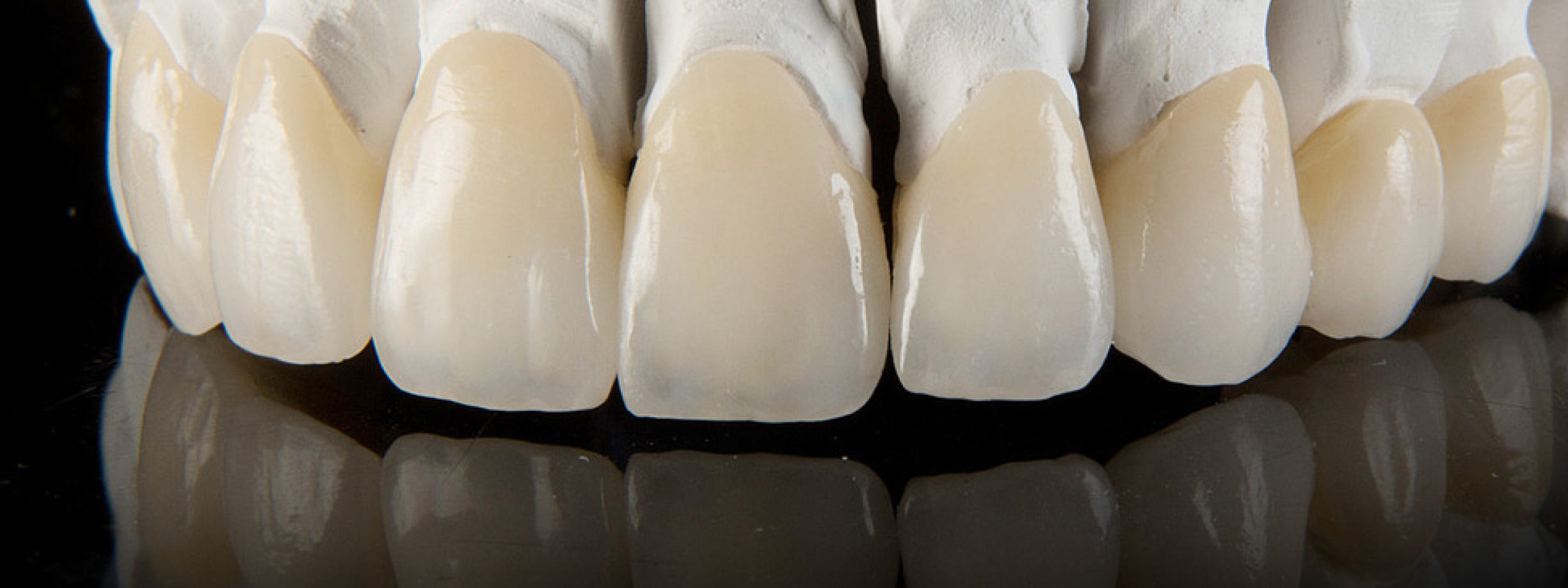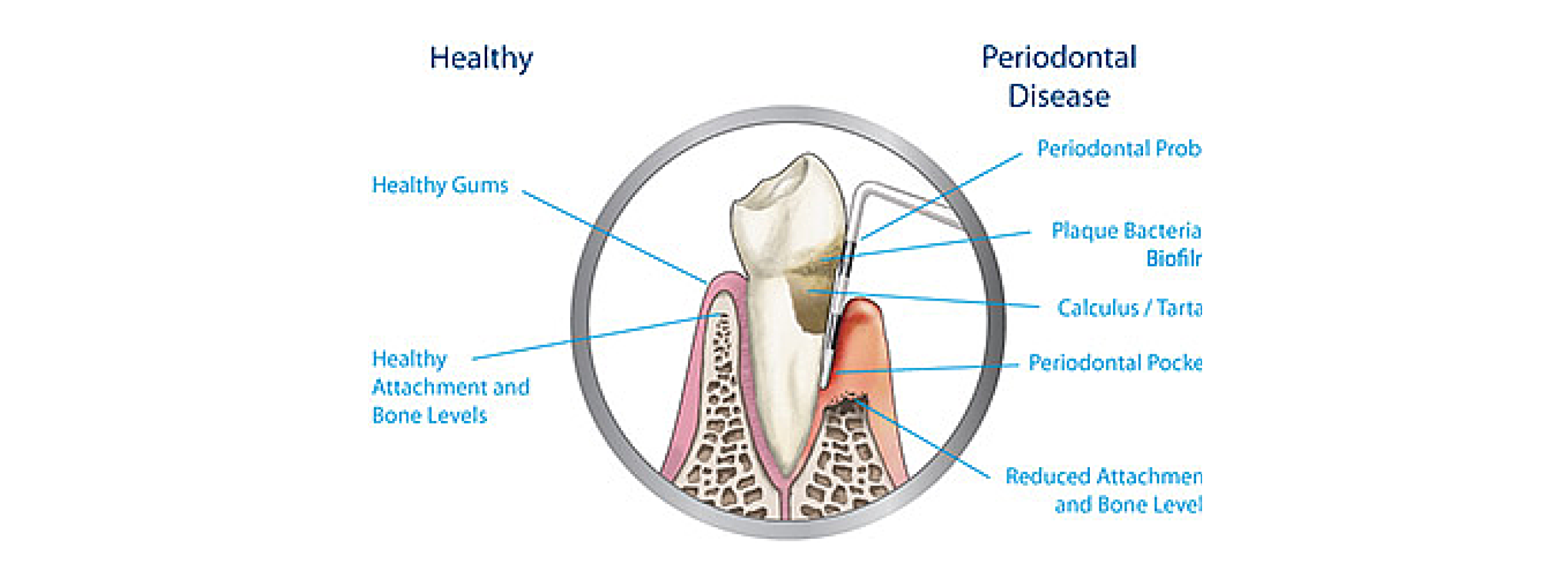Cosmetic and general dentistry
Below are a list of Popular Cosmetic and General Dentistry treatments, If there is a particular treatment that you are in need of or interested to learn more about then please Contact us and we can provide information to help you receive the very best Dental Treatments in Cancun and Playa Del Carmen Mexico.
Porcelain Veneers

Veneers are thin shells that are bonded to the front parts of teeth. If most of the tooth remains, veneers can improve the look of the tooth without cutting it down enough to place a crown. Veneers are made of ceramic or resin materials. They are similar to artificial fingernails and are very Popular and common treatment for people looking to rejuvenate their Smiles.
What Types of Problems Do Dental Veneers Fix?
Veneers are routinely used to fix:
- Teeth that are discolored
- Teeth that are worn down
- Teeth that are chipped or broken
- Teeth that are misaligned, uneven, or irregularly shaped (for example, have craters or bulges in them)
- Teeth with gaps between them (to close the space between these teeth)
- Diagnosis and treatment planning. This first step involves your active participation. Explain to your dentist the result that you are trying to achieve. During this appointment, your dentist will examine your teeth to make sure dental veneers are appropriate for you and discuss what the procedure will involve and some of its limitations. He or she also may take X-rays and possibly make impressions of your mouth and teeth.
- Preparation. To prepare a tooth for a veneer, your dentist will remove about 1/2 millimeter of enamel from the tooth surface, which is an amount nearly equal to the thickness of the veneer to be added to the tooth surface. Before trimming off the enamel, you and your dentist will decide the need for a local anesthetic to numb the area. Next, your dentist will make a model or impression of your tooth. This model is sent out to a dental laboratory, which in turn constructs your veneer.
Zoom Teeth Whitening

The complete procedure takes less than an hour, but a regular teeth cleaning is recommended prior to the actual Zoom teeth whitening session. The procedure begins with a short preparation to cover the lips and gums, leaving the teeth exposed. The dentist or dental assistant then applies the Zoom hydrogen peroxide whitening gel, which works together with the Zoom light to penetrate the teeth and break up the stains and discoloration. The gel remains in place for 15 minutes while the light is activated. During this time, you can relax, watch TV or listen to music.
The gel is applied for three 15-minute sessions of light activation, for a total treatment time of 45 minutes. Individuals with a strong gag reflex or anxiety may have difficulty undergoing the entire procedure. Immediately afterwards, a sensitivity-reducing fluoride paste-gel is applied to the teeth.
Is teeth whitening safe for my teeth?
As you would with any product you use on your body, be sure to follow the teeth whitening directions carefully. Some whitening products can irritate your gums or cause undue sensitivity if used improperly or too often.
The safest way to whiten your teeth is under the supervision of your dental professional who will assess your overall oral health, the health of your teeth and know the history of your teeth. For example, if your dental professional knows that you are prone to sensitivity, he or she may recommend a gentle formulation to ensure you get the results you are looking for with a treatment that you will enjoy.
Dental bonding

Bonding is a procedure that uses a tooth-colored composite resin (plastic) to repair a tooth. Bonding can be used on teeth that are decayed, chipped, broken or discolored. The procedure is called bonding because the material bonds to the tooth. Unlike veneers, bonding can be done in a single visit. Veneers are another way to repair some teeth. They are made in a laboratory and require a customized mold to achieve a proper fit.
For What Conditions Is Dental Bonding Considered?
Dental bonding is an option that can be considered:
- To repair decayed teeth
- To repair chipped or cracked teeth
- To improve the appearance of discolored teeth
- To close spaces between teeth
- To make teeth look longer
- To change the shape of teeth
- As a cosmetic alternative to amalgam fillings
- To protect a portion of the tooth's root that has been exposed when gums recede.
Dental Crowns

A crown is a tooth-shaped cover placed over a tooth that is badly damaged or decayed. Many people call it a cap.
Crowns may be placed for several reasons. Usually the tooth has been broken or severely damaged by decay. As a result, a filling can't replace enough of the tooth or make the tooth strong enough. A crown may hold together parts of a cracked tooth. It also can be used to hold a bridge in place. Crowns can be used to improve appearance as well. They may be placed to cover misshapen or badly discolored teeth.
Crowns can be made of:
- All metal
- Zirconia
- Porcelain fused to metal (PFM)
- Porcelain fused to zirconia
- All ceramic
Metals include gold alloy, other alloys (palladium) or a base-metal alloy (nickel or chromium). The all-metal or PFM crowns are stronger and are better choices for back teeth than ceramic crowns. PFM and all-ceramic crowns are the same color as your natural teeth. They look just like normal teeth.
What Steps Are Involved in Preparing a Tooth for a Crown?
Preparing a tooth for a crown usually requires two visits to the dentist -- the first step involves examining and preparing the tooth, the second visit involves placement of the permanent crown.
First Visit: Examining and preparing the tooth.
At the first visit in preparation for a crown, your dentist may take a few X-rays to check the roots of the tooth receiving the crown and surrounding bone. If the tooth has extensive decay or if there is a risk of infection or injury to the tooth's pulp, a root canal Treatment may first be performed.
Before the process of making a crown begins, your dentist will anesthetize (numb) the tooth and the gum tissue around the tooth. Next, the tooth receiving the crown is filed down along the chewing surface and sides to make room for the crown. The amount removed depends on the type of crown used (for instance, all-metal crowns are thinner and require less tooth structure removal than all-porcelain or porcelain-fused-to-metal ones). If, on the other hand, a large area of the tooth is missing (due to decay or damage), your dentist will use filling material to "build up" the tooth to support the crown.
After reshaping the tooth, your dentist will use a paste or putty to make an impression of the tooth to receive the crown. Impressions of the teeth above and below the tooth to receive the dental crown will also be made to make sure that the crown will not affect your bite.
The impressions are sent to a dental lab where the crown will be manufactured. The crown is usually returned to your dentist's office in two to three weeks. If the crown is made of porcelain, your dentist will also select the shade that most closely matches the color of the neighboring teeth. During this first office visit your dentist will make a temporary crown to cover and protect the prepared tooth while the crown is being made. Temporary crowns usually are made of acrylic and are held in place using a temporary cement.
Second Visit: Receiving the permanent dental crown.
At the second visit, your dentist will remove the temporary crown and check the fit and color of the permanent crown. If everything is acceptable, a local anesthetic will be used to numb the tooth and the new crown is permanently cemented in place.
Dental Extractions

There are two types of extractions:
- A simple extraction is performed on a tooth that can be seen in the mouth. General dentists commonly do simple extractions. In a simple extraction, the dentist loosens the tooth with an instrument called an elevator. Then the dentist uses an instrument called a forceps to remove the tooth.
- A surgical extraction is a more complex procedure. It is used if a tooth may have broken off at the gum line or has not come into the mouth yet. Surgical extractions commonly are done by oral surgeons. However, they are also done by general dentists. The doctor makes a small incision (cut) into your gum. Sometimes it's necessary to remove some of the bone around the tooth or to cut the tooth in half in order to extract it.
Root Canal Treatments

Root canal treatment is needed for two main reasons. The first is infection. An untreated cavity is a common cause of pulp infection. The infection destroys the enamel and dentin of the tooth until it reaches the pulp. Bacteria then infect the pulp. Antibiotics can't reach all the bacteria inside a canal. They are given to reduce the number of bacteria that spread outside the canal and into the bone. The inflammation caused by the infection reduces the blood supply to the tooth. The reduced blood supply also keeps the pulp from healing.
The second reason for a root canal is damage to the pulp that can't be fixed. A fracture in a tooth can damage the pulp. So can a less severe blow to the tooth (trauma), even if there's no visible damage right away. In time, the tooth may darken because of bleeding within the pulp.
What Should One Expect After the Root Canal?
For the first few days following the completion of a root canal, the tooth may feel sensitive due to natural tissue inflammation, especially if there was pain or infection before the procedure. This sensitivity or discomfort usually can be controlled with over-the-counter pain medications, Most patients can return to their normal activities the next day.
Until your root canal procedure is completely finished -- that is to say, the permanent filling is in place and/or the crown, it's wise to minimize chewing on the tooth under repair. This step will help avoid recontamination of the interior of the tooth and also may prevent a fragile tooth from breaking before the tooth can be fully restored.
Ceramic Dental Onlays and Inlays

A dental inlay or onlay is bigger than a Filling and smaller than a Crown It is bonded or cemented into place.
An inlay is similar to a filling, but it lies within the cusps (bumps) on the chewing surface of your tooth. An onlay is larger than an inlay. It replaces one or more decayed cusps.
Soft Tissue Grafting

Gums can recede for several reasons. They include:
- Periodontal disease
- Physical trauma (brushing too hard, too often or with a hard brush)
- Tooth position
- Gum tissue that is naturally thin
If gums recede severely, some of the tooth's root will be exposed. This can make the tooth sensitive to hot or cold temperatures and more prone to root decay. Some people also don't like the way it looks.
Dental Root Plaining and Scaling

Scaling and root planing is the most common and conservative form of treatment for periodontal (gum) disease
Scaling is the removal of calculus (commonly called tartar) and plaque that attach to the tooth surfaces. The process especially targets the area below the gum line, along the root.
Plaque is a sticky substance, full of bacteria, that forms on teeth. When plaque hardens over time, it is called calculus.
Plaque is more likely to stick to rough surfaces. For this reason, the root surface is made smooth in a process called root planing. Root planing removes any remaining calculus and smooths irregular areas of the root surface.
All content is for informational purposes only and The Site Does Not Provide Medical Advice The Content is not intended to be a substitute for professional medical advice, diagnosis, or treatment. Always seek the advice of your physician or other qualified health provider with any questions you may have regarding a medical condition. Never disregard professional medical advice or delay in seeking it because of something you have read on this site.




